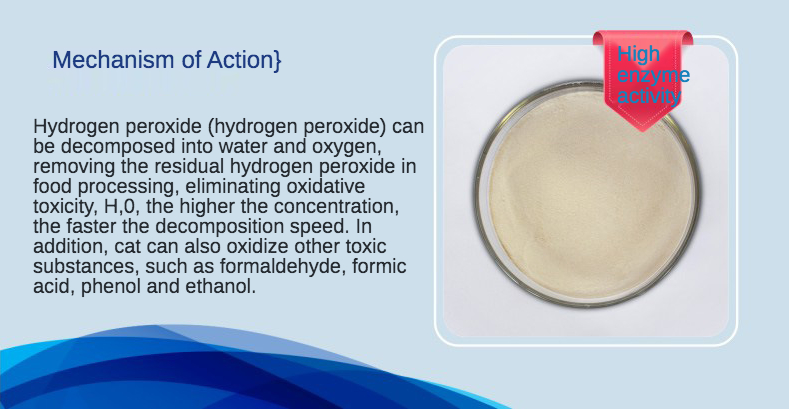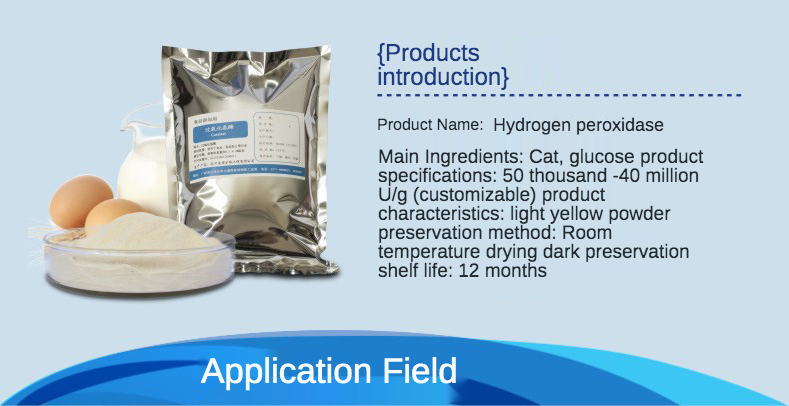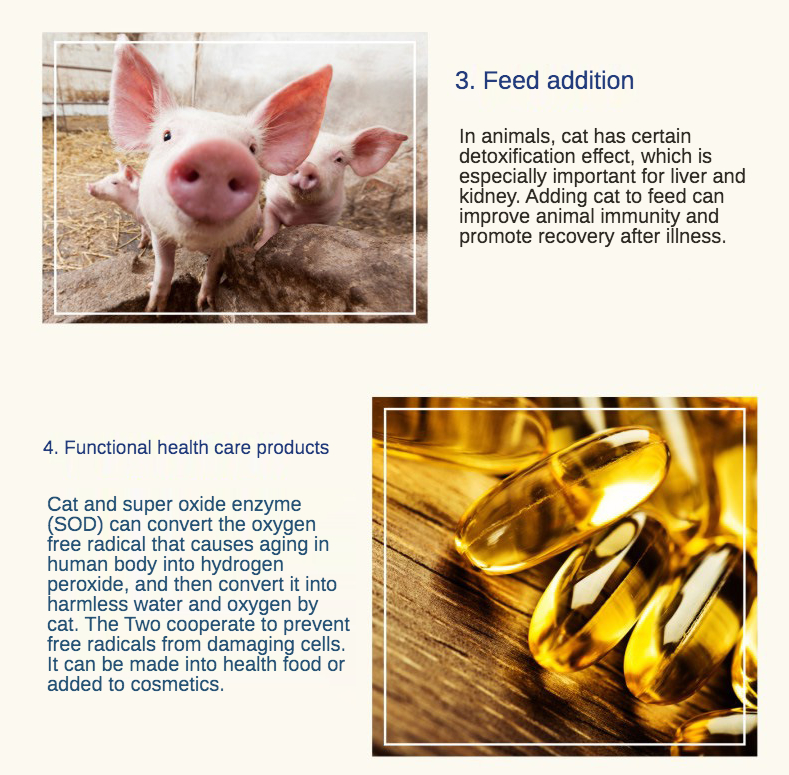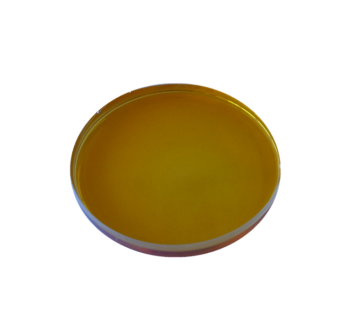






Catalase
Catalase is a biological enzyme extracted by deep fermentation culture of selected Aspergillus niger, and then refined by microfiltration, ultrafiltration, and vacuum freeze-drying technology. It is mainly used to remove hydrogen peroxide generated or residual in food after sterilization, bleaching, and processing.
The hydrogen peroxide enzyme can decompose hydrogen peroxide (H2O2) into water and oxygen to remove the residual hydrogen peroxide in food processing and eliminate oxidative toxicity. The higher the concentration of H2O2, the faster the decomposition speed. Additionally, catalase can also oxidize other cytotoxic substances, such as formaldehyde, formic acid, phenol, and ethanol.
It is soluble in water, and the aqueous solution is an opaque light yellow liquid.
Product Information:
Product name: Catalase
Main components: Catalase, glucose
Product specification: 50,000-400,000 U/g (can be customized)
Product properties: Light yellow powder
Storage: Room temperature, dry, and protected from light
Shelf life: 12 months
Applications:
- Food processing: Some foods use strong oxidant hydrogen peroxide during processing, which can leave toxic residual hydrogen peroxide in the food. Catalase can help remove this residue.
- Dairy processing: In dairy products, hydrogen peroxide can be generated after sterilization by UV light. Catalase can effectively remove this residual hydrogen peroxide.
- Feed addition: Catalase has a detoxification effect in animal bodies, especially important for liver and kidney health.
- Functional health products: Catalase and superoxide dismutase (SOD) can work together to prevent free radicals from harming cells. They can be used in health food or cosmetics.
- Industrial production: Catalase can be used in industries like paper making, textiles, and environmental protection to remove hydrogen peroxide used as a bleaching agent, efficiently and safely without causing environmental pollution.





